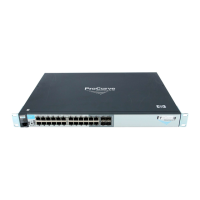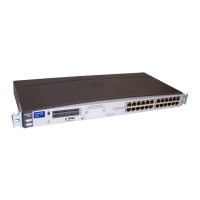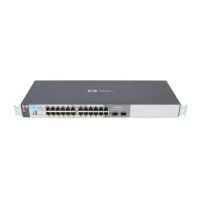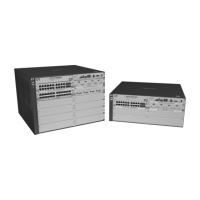Port Trunking
CLI: Viewing and Configuring Port Trunk Groups
Figure 12-10. Example of Criteria for Automatically Forming a Dynamic LACP Trunk
Switch “A”
with ports set
to LACP
passive.
Switch “B”
with ports set
to LACP
passive.
Dynamic LACP trunk cannot automatically form because both
ends of the links are LACP passive.
(In this case spanning-tree blocking is needed to prevent a loop.
Switch “A”
with ports set
to LACP
active.
Switch “B”
with ports set
to LACP
passive.
Dynamic LACP trunk automatically forms because both
ends of the links are LACP and at least one end is LACP
active. (Spanning tree is not needed, and the clear
advantages are increased bandwidth and fault-tolerance.)
Syntax: interface < port-list > lacp active
Configures < port-list > as LACP active. If the ports at the other
end of the links on < port-list > are configured as LACP passive,
then this command enables a dynamic LACP trunk group on
< port-list >.
This example uses ports C4 and C5 to enable a dynamic LACP trunk group.
ProCurve(config)# interface c4-c5 lacp active
Removing Ports from an Dynamic LACP Trunk Group. To remove a
port from dynamic LACP trunk operation, you must turn off LACP on the port.
(On a port in an operating, dynamic LACP trunk, you cannot change between
LACP Active and LACP passive without first removing LACP operation from
the port.)
12-16
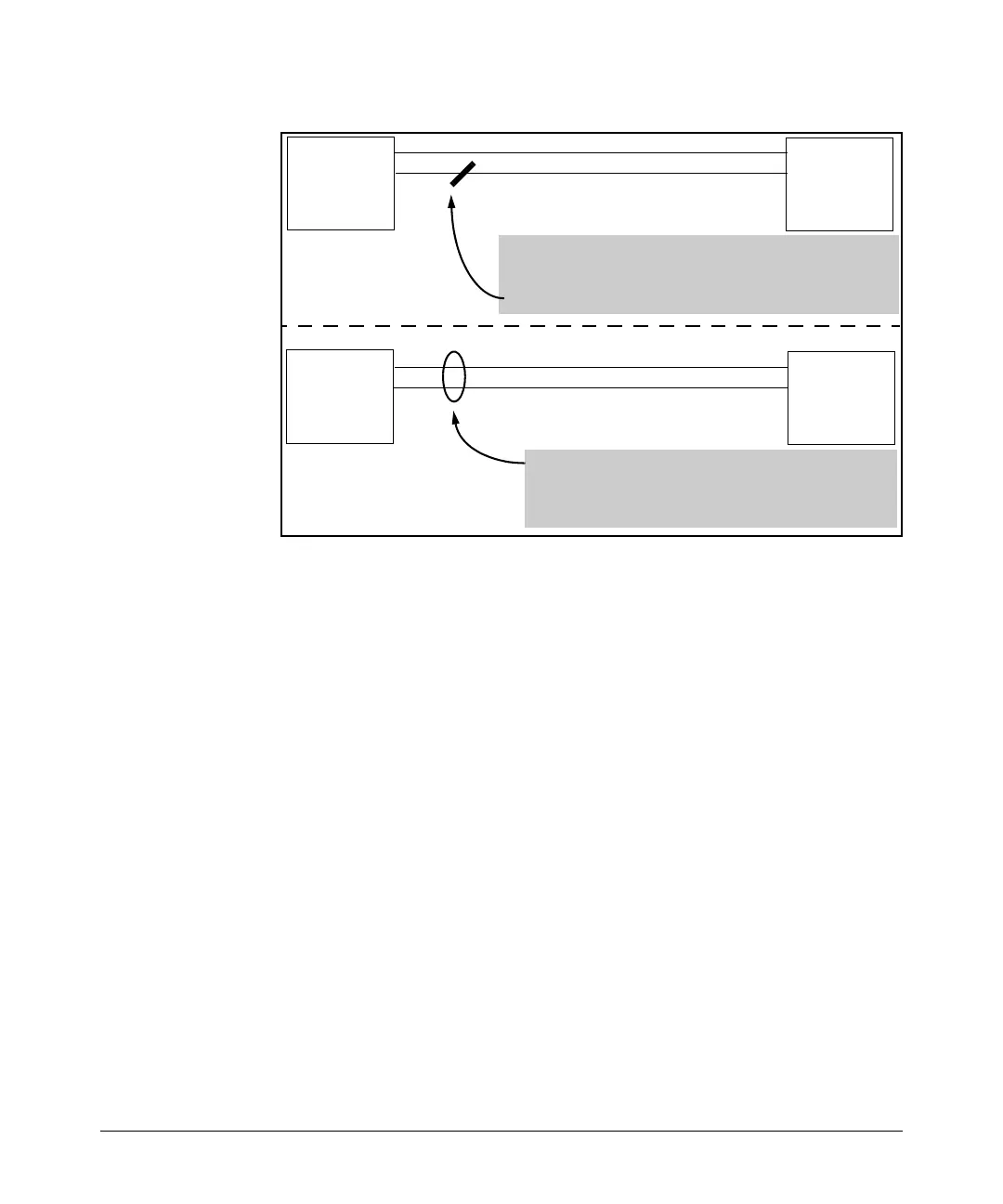